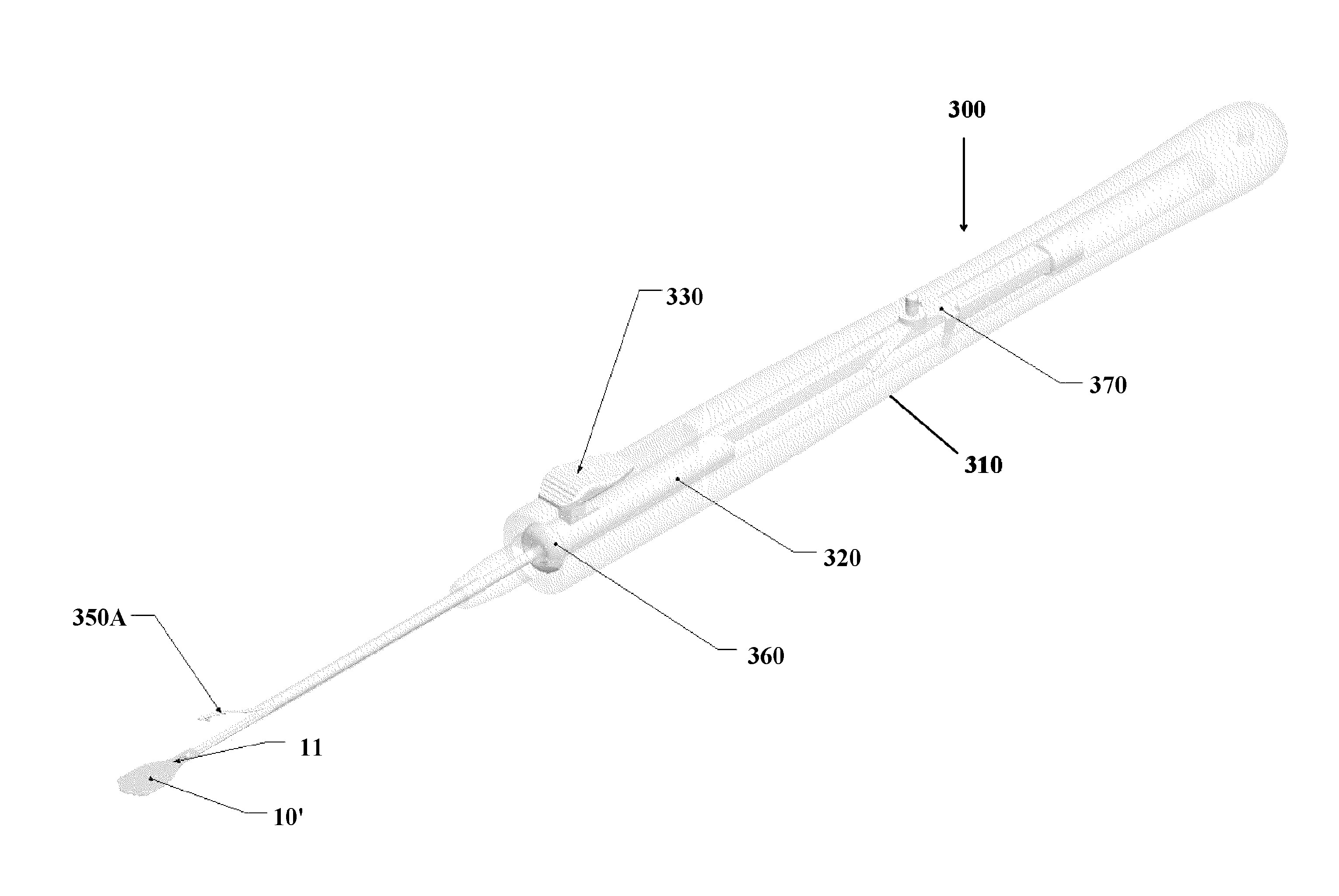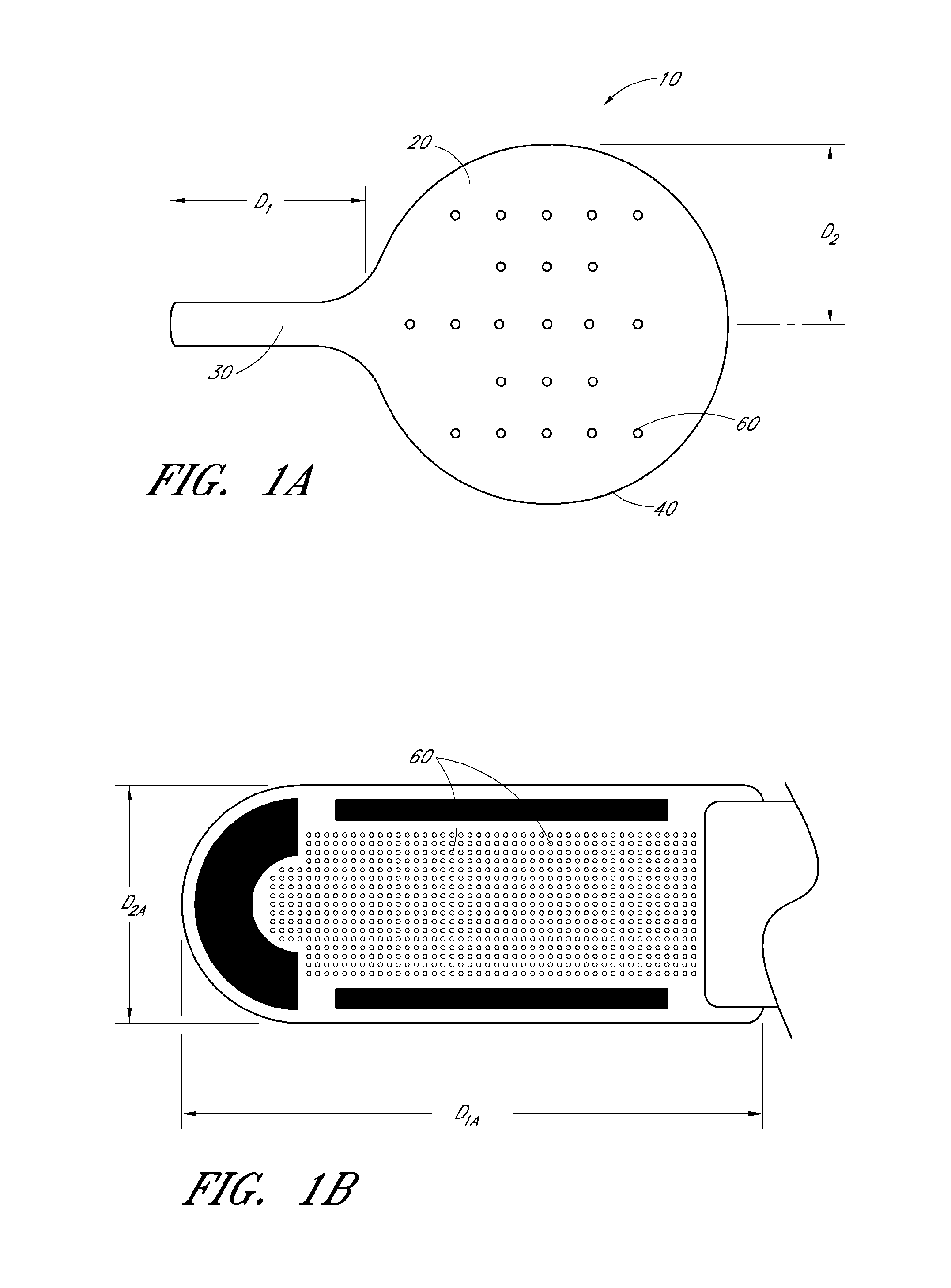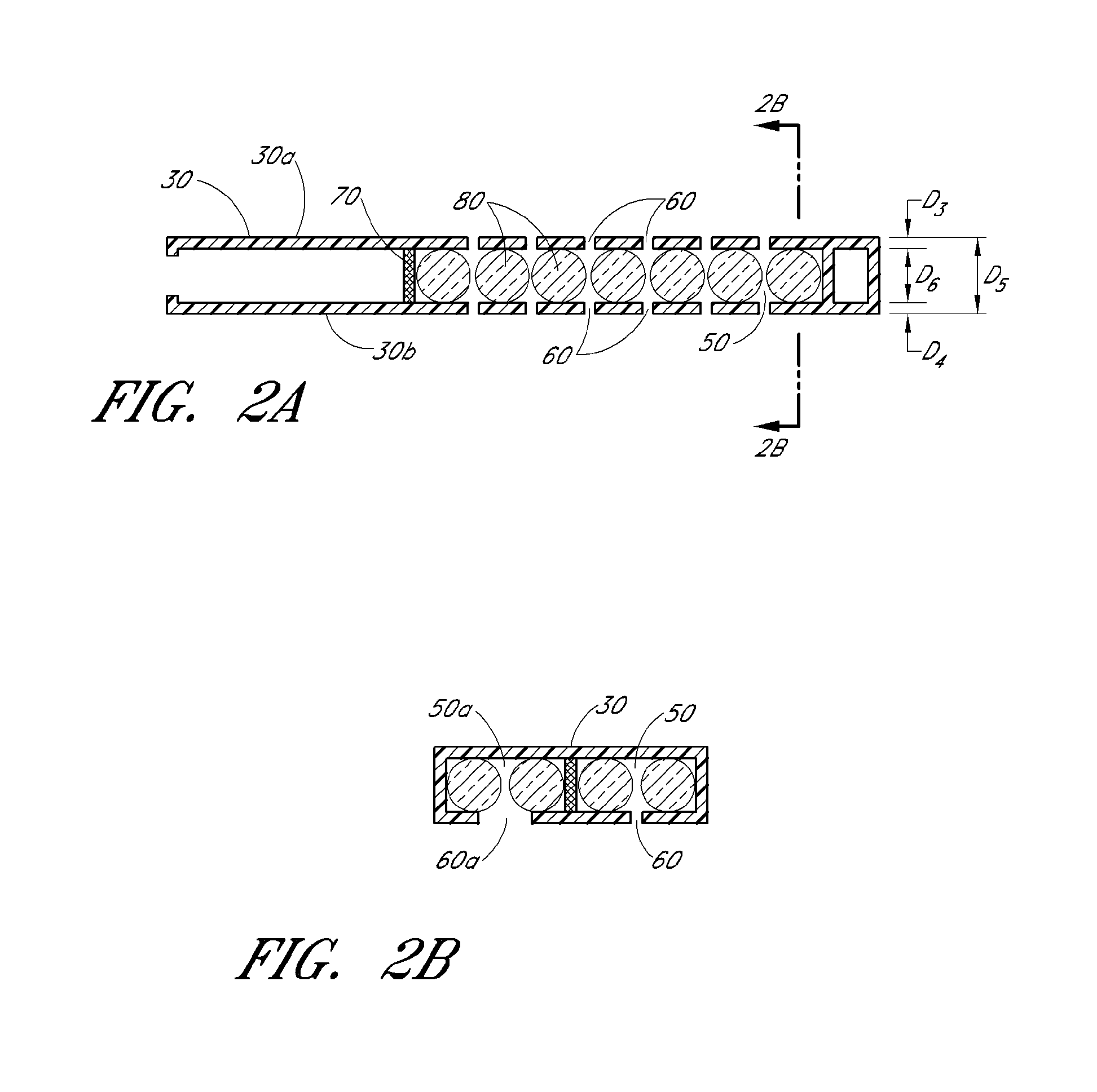Instruments and methods for the implantation of cell-seeded substrates
- Summary
- Abstract
- Description
- Claims
- Application Information
AI Technical Summary
Benefits of technology
Problems solved by technology
Method used
Image
Examples
example 1
Determination of Pore Diameter that Retains RPE Cells
[0266]In the eye, a healthy Bruch's membrane functions as a molecular sieve that regulates the exchange of nutrients and metabolic wastes between the retina and the choroid. Based on the sub-retinal location of certain ocular-directed substrates disclosed herein, the porosity of the substrate would ideally simulate these functions of a healthy Bruch's membrane.
[0267]To investigate the pore diameter range that would allow for function, cell migration assays were performed. Circular parylene discs were manufactured with varying pore diameters (1, 2, 3, and 5 um) and placed on top of Transwell polyester (PET) cell culture inserts with 8 um pores. Inserts were placed into 24-well culture plates. RPE cells were seeded on the parylene discs with serum free medium inside the PET cell culture inserts and medium containing 20 μg / m recombinant human PDGF (as a chemoattractant) outside the inserts. After overnight culture, the PET insert mem...
example 2
Biodegradable Polymer Substrates
[0268]As discussed above, parylene substrates are used in several embodiments. Biodegradable polycaprolactone (PCL) material compounded with polyethylene glycol (PEG) is used to test the formation of pores in substrates. During polymerization, the PCL-PEG material is spin-coated onto glass coverslips to make thin films of a desired thickness, as discussed above. Cyclic amino acids (Arg-Gly-Asp; cRGD) covalently bound to a PEG-PCL copolymer is annealed onto the surface of the films. Upon treatment with aqueous buffer or media, the water soluble PEG is washed away and creates pores in the film. The ratio of the PCL-PEG affects the degradation rate of the substrate. These pores increase the surface area of the polymer exposed to water and therefore increase the degradation rate. Through this approach both the porosity of the films as well as the degradation rate may be manipulated based on the amount of PEG added to the polymer blend.
example 3
In Vitro Analyses of hESC-RPE
[0269]The present example demonstrates that hESC colonies grown to superconfluency, in the absence of FGF2, on mouse or human feeder layers or on matrigel, routinely produce discrete pigmented foci, which grow in size. These pigmented foci can be excised and expanded to produce highly differentiated monolayers that are similar to cultured fetal RPE or adult human cultured RPE. See FIG. 11. Cells can be produced in quantities required for clinical use at 99% purity, as determined by microscopic analysis of pigmented cells as well as quantitative PCR for nanog and Oct-4, markers of possible contaminating undifferentiated hESC. Monolayer cultures are phenotypically stable after prolonged culture (11 months) without passage. Furthermore phenotype and normal karyotype can be maintained for up to at least 4 passages. Based on cell numbers in culture, some embodiments employ about 1.5×105 cells on a 5 mm diameter substrate are used for each treated eye.
[0270]Mu...
PUM
| Property | Measurement | Unit |
|---|---|---|
| Friction | aaaaa | aaaaa |
| Compatibility | aaaaa | aaaaa |
| Bioadhesion | aaaaa | aaaaa |
Abstract
Description
Claims
Application Information
 Login to View More
Login to View More - R&D
- Intellectual Property
- Life Sciences
- Materials
- Tech Scout
- Unparalleled Data Quality
- Higher Quality Content
- 60% Fewer Hallucinations
Browse by: Latest US Patents, China's latest patents, Technical Efficacy Thesaurus, Application Domain, Technology Topic, Popular Technical Reports.
© 2025 PatSnap. All rights reserved.Legal|Privacy policy|Modern Slavery Act Transparency Statement|Sitemap|About US| Contact US: help@patsnap.com



